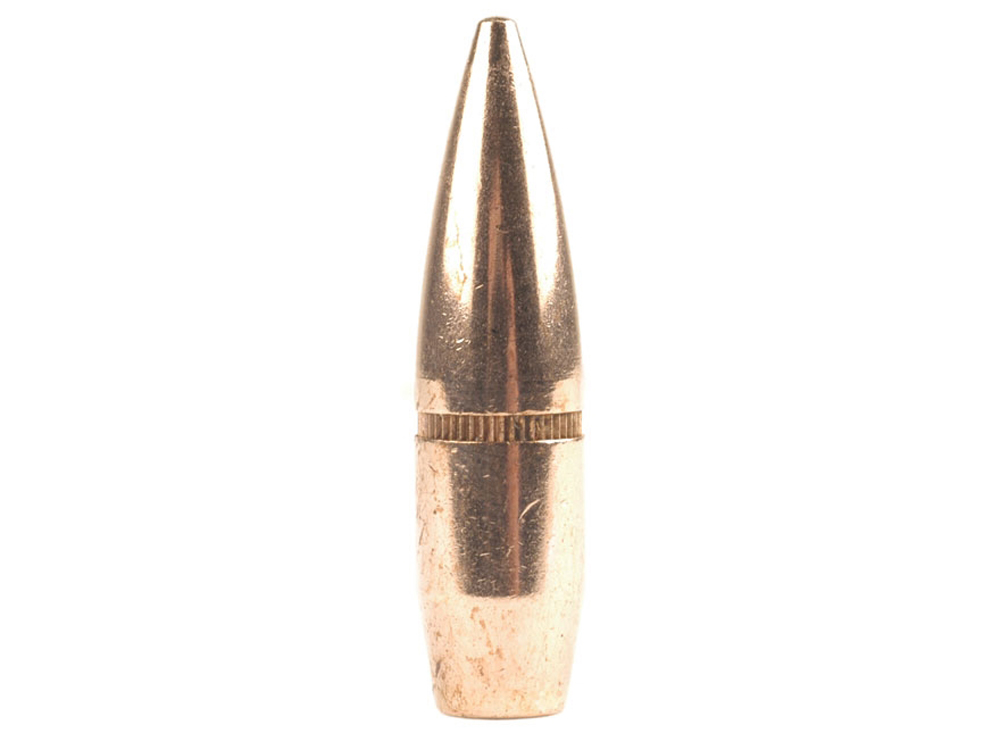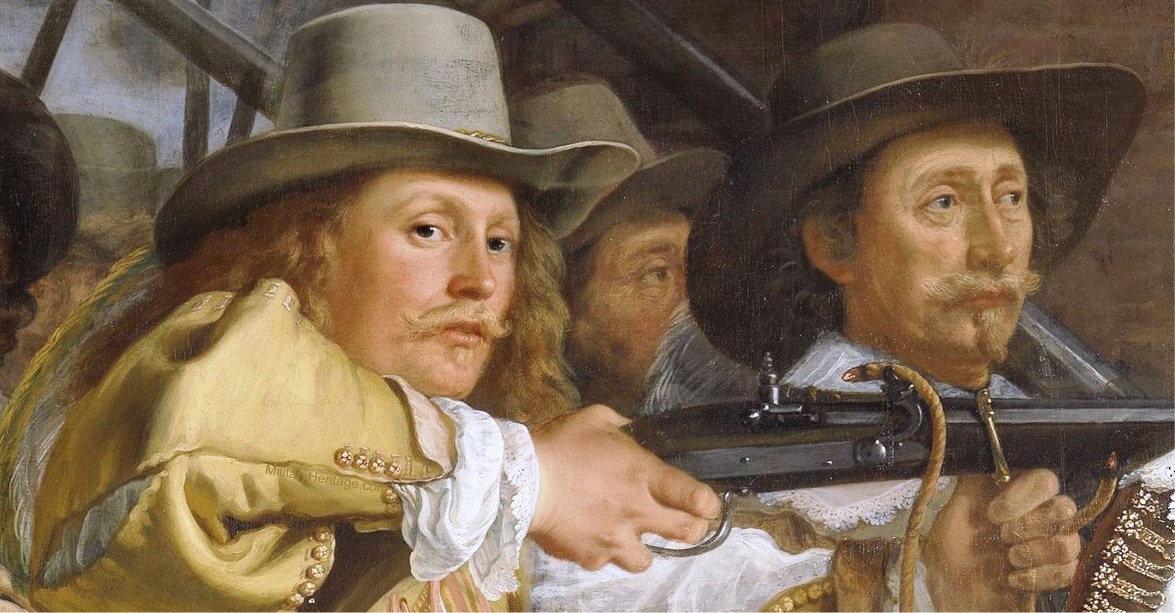
The Bullet. Merriam Webster defines it as follows:
a kinetic projectile and the component of firearm ammunition that is expelled from the gun barrel during shooting. The term is from Middle French and originated as the diminutive of the word boulle (boullet), which means “small ball”.
Why would I write about such an insignificant thing? How could a bullet be interesting in and of itself?
Well - for one thing: firearm technology is inextricably linked to bullet technology. Modern firearms could not exist without the advances in technology of bullets since the first round balls. For another: the science of bullets, while complex, is infinitely fascinating. there is ballistics - of which entire books are written. There is the science of kinetic energy, momentum and the resulting damage to the target. Perhaps most interesting to the author is the history itself - the circumstances, situations, opportunities of the moment. The stories, circumstances, and personalities of the inventors. And finally, the stories of the use, the impact (excuse the pun) of each new invention.
However, before we can even get started on the lowly bullet, we must first consider gunpowder. Because without gunpowder - or some equivlent, bullets would not exist - or would they?
In fact, one could argue that slings and sling-shots can propel bullets. I don’t care to argue the point. Suffice it to say that those are not the topic of this piece.
Since its invention in 9th century China, gunpowder has featured in various forms of weapon. Gunpowder consists of a mixture of charcoal (carbon), sulphur and saltpetre (potassium nitrate). It is considered a “low explosive”, since it deflagrates, or burns at subsonic speeds. This made it suitable for use in primitive firearms, since it would not tend to burst the barrels made of cast iron. Gunpowder could addiitonally be used inside fused artillery shells (as in mortars) to detonate on or immediately before landing on their target.
For centuries, round balls of iron, and masses of chain or piles of “grape” shot were fired out of cannons as artillery, and suitably proportioned round balls were fired from muskets and pistols.
These weapons were little more than stoppered cylinders with smooth sides, and a small hole near the closed end through which an ignition could take place to fire the weapon.
The operation would consist of first, cleaning out the barrel - or swabbing.
Then an amount of powder would be measured down the barrel. Then (optionally) a
wad would be stuffed into the barrel, a ball rolled down (and possibly another
wad - which would prevent the ball from rolling out if the barrel pitched
forwards). In some firearms, the ball would be wrapped in a
leather patch to make it a tight fit. This ball would have to be rammed down
the tube. Then a small amount of very fine powder (primer) would be poured into
the touch-hole, the weapon aimed, and a spark (often using a string soaked in a
mix of powder and kerosene) applied to the touch-hole. The ignition of the
primer would in turn ignite the powder charge, and the rapid expansion of the
burning powder would force the ball out of the barrel at great velocity.
Most guns - then and now - rely simply on the transfer of kinetic energy to damage the target. Kinetic energy follows the Newtonian formula:
The upshot of this is that the amount of damage caused will be proportional to the mass (weight) of the projectile, and proportional to the square of the velocity. In other words, an increase in velocity causes a large increase in damage. However, gunpowder, or black powder as we mentioned, is relatively slow burning (although faster than anything else usable at the time). The mxaimum velocity attainable is limited. That is why the diameter of ancient cannon balls is so large, even compared to modern weapons. For small (short barrelled) guns, the problem is compounded, because as we shall see, they lack the length over which the powder can complete its burn and so transfer all its energy into propulsion. Increasing the amount of powder would simply waste it as flash andbang at the muzzle, without increasing the velocity of the bullet. It is because of these factors that pistol and musket bullets were much larger than todays small-arms munitions.
Little would change in this technology for several centuries. Thousands were killed by massive iron balls fired from cannons over centuries of organized warfare. Many were killed by balls of lead of more than 1/2 inch in diameter fired from muskets. Ships would fire 48 or 64 cannon in a terrifying broadside, crashing into the wooden hull of their opposite number, shredding flesh in a red mist of wooden splinters and shrapnel, and tearing off whole limbs as they passed. Marines would cling onto spars and ratlines, and fire muskets down into the maelstrom, aiming to pick out officers and steersmen. Who could want for more destruction?
Bullets were commonly made of lead, cast in moulds which were often sold with the firearm for which they were made. Firearms were produced by craftsmen as almost a cottage industry, and stndardized measurements did not exist, so by far the best (and perhaps the only) way to ensure your bullets fit your gun, was to make them yourself, using the mould produced by the same hands that made your gun.
Muskets (smoothbore long guns) were used more like cannon than todays rifles. Long ranks of men would line up and shoot simultaneously at ranges of less than 50 yards. Accuracy was not a factor. In fact soldiers were not even instructed to “aim”. They were firing into massed ranks of men. Accurate or not, the carnage was considerable.
However, then as now, technology did not stand still.
Some time in the mid-15th century, gunsmiths in Augsburg were experimenting with rifled barrels. Augsburg was a commercial centre in the Holy Roman Empire, and home to the richest man in the world at that time - a merchant by the name of Jakob Fugger. Rifling is the application of spiral grooves on the inside of the barrel, which imparts axial spin on the bullet as it travels down the barrel. This spin stbilizes the flight, and makes a significant improvement inaccuracy.
Beyond the expense (which is significant), there was some cultural resistance to using the new technology. For example, in 1574 petitioners in Augsberg argued that the local ban on using the rifling technology was not just bad for local defense, but also gave local gunsmiths a bad reputation. This case suggests to me that rifling was already quite prevalent, and well known at least as a competition technology. It is especially ironic that the smiths in the town of its invention should see its use barred in local competition. Eventually a compromise was recahed where two competitions would be held, one for smoothbores, and another for rifled guns. It would be another 20 years before the town of Augsburg permitted rifled guns to be used in regular competition.
Meanwhile, as all that was going on, August Kotter of Nuremburg is credited with improving the system of rifling in the year 1498, and is the only named person on the development of such a crucuial technology.
What does rifling have to do with bullets?
Quite a lot, it turns out (again pardon the pun). In order for rifling to do its job, the bullet must be a (very) tight fit in the barrel. For muzzleloading guns, this meant forcing a tight bullet all the way down a long barrel (and 42” was not uncommon in the period). This meant that loading times would be even worse than for muskets. Military tactics of the period were designed around the mass volley fire concept. The rifle would just be too slow to use on this formation. Since military tactics evolve far slower than technology, it would be centuries between the invention of rifling, and its adoption as a military standard. We will get back to this later.
Major military powers around the world continue to use smoothbored muskets as their standard issue.
Another important development of the mid 15th Century was the cartridge. The troops of Christian I, Elector of Saxony were recorded as using cartridges at this time. Heavy paper, known as “cartridge paper” was formed into a tube, a ball and measure of power poured into it, and the ends were twisted closed (and possibly tied).
Troops would bite off the end of the cartridge, pour the powder down the barrel, then insert the ball, ram it down and be ready to fire. Sometimes the paper was used as a wad.

The early “New Model Army” of the Englih Civil War used Arquebus (matchlock muskets) for its foot soldiers (who were interpersed with pikemen), and the dragoons (mounted infantry) used snaphaunces. These guns were sufficiently standardized as for the ammunition to be mass manufactured by this point, as evidenced by one nickname for the aquebus - the “caliver”, a corruption of calibre, or bore measure.

Britain later adopted the Long Land Pattern Musket of 1742 (AKA Brown Bess), and continued to use it until 1838, when it would be superceded by - another smoothbore - but fired with a percusion cap. The Brown Bess and its successor fired a .75” callibre ball. I cannot find the actual calibre of the “calivers”, but it was similar if not identical to the .75” of the Brown Bess. Other powers - the Dutch, French, Germans followed along similar lines. The rifled bore would only find favour among sport shooters and hunters.
So,to summarize: since the introuction of firearms in the west via China, the small arms projectile has been a round cast lead ball, fired down a smooth barrel. For over 400 years. You are probably thinking “you said this was going to be interesting!” Well - hold your criticisms a little while longer.
Moving along these several hundred years, the major powers were beginning to experiment with rifles. America during the Revolutionary War employed ten battallions of rifles of whom a british officer observed:
The Americans had riflemen who could hit a man anywhere they liked at 200 paces…At King’s Mountain, they destroyed us. These riflemen were employed as scouts and skirmishers. They quickly developed a dangerous reputation.